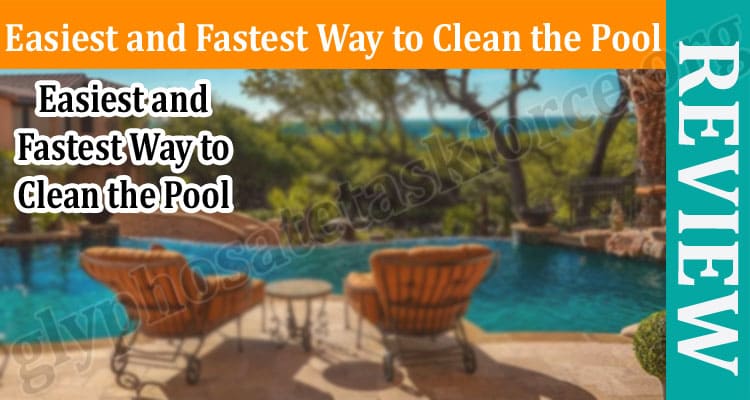We all have a slack time every now and then. But here’s the thing: if you don’t clean your pool regularly (and properly), you’ll be left with a pool that is unfit to swim.
Cleaning, proper circulation, and water chemistry are the best ways for pool maintenance. Skim, brush, and vacuum your way to a sparkling clean pool in no time with valuable tools and a little work. In a pool cleaning task, ultra efficient suction pool cleaners can save the day.
Table of Contents
What is a Suction-Type Pool Cleaner?
A suction-type pool cleaner works like a vacuum, sucking in the water around the pool, removing bugs, leaves, debris, and other impurities. The debris is pulled into your pool’s filtration system. After cleaning the pool, you can easily remove the filter basket and clean it before putting it back.
When to Get a Suction-Type Pool Cleaner
A suction-type pool cleaner is not designed to clean all types of pools, but it is good at removing light to medium pollutants from the water. If your pool is surrounded by trees, you may need a leaf canister attachment or a different type of pool cleaner instead.
The major setback of a suction-side pool cleaner is that it is only as good as the pump system in your pool. A suction cleaner will not work well if you have a weak pool pump. In this case, you may need to operate the cleaner longer. Variable speed pumps (using less energy) will have to work at least 2600 RPM (25 GPM) for extended hours to properly clean the pool. This will, as expected, cause a surge in your electric bill.
Some suction pool cleaners don’t work great on certain pool surfaces. Delicate brushes or rubber blades may be destroyed by extra-rough surfaces. It’s critical to choose a pool cleaner that matches the type of pool surfaces for it to work efficiently.
How to Install a Suction Pool Cleaner
Setting up a suction pool cleaner for the first time can be intimidating. But once you know how to install a suction pool cleaner properly, things will be a breeze on your next attempt.
Installing a suction pool cleaner is composed of three steps:
Connecting the Hose
Depending on the brand, there are many ways to attach the cleaner’s hose. Some cleaners connect to the skimmer, which they need to connect to vac plates and use an adaptor. Others enter a dedicated suction line via a side port on the pool wall.
It is critical to totally immerse the hose while attaching it to get all the air out. The number of hoses employed is also critical. Use as many hoses as necessary to reach the farthest location.
Check the Flow Gauge
Each automated pool cleaner requires a particular level of suction to work well. Most have a flow gauge that you attach to the end of the hose where the head would be. This apparatus assists in checking whether the machine produces the right suction power. If not, you’ll need to adjust the valves or add a flow adjuster to get the correct amount of suction. After that, remove the flow gauge and replace it with the head. Then you’re ready to go!
Adjust the Flow
Some suction side cleaners are slightly different. Instead of a flow gauge, you need to count the number of revolutions within a time frame, then adjust as needed. If you purchase one of these models, refer to your product manual for proper installation steps.
Adjusting Water Chemicals
Cleaning doesn’t end in vacuuming. You also have to adjust the water chemistry to sanitize the pool water.
Test your water once a week. Buy a test kit to determine how much a chemical you need to add to the water. Most pool suppliers provide simple test kits or test strips to test your swimming pool water chemicals. The following are the key indicators to remember:
pH: The ideal pH level is about 7.5. It’s important to keep the level close to this range since if it’s too high or too low, it can cause many problems for the pool.
Calcium hardness: Aim for 200 – 400 ppm. When calcium hardness levels are too low, your pool’s plaster or vinyl liner may be damaged. But if it’s too high, there will be a lot of calcium deposits.
Alkalinity: The alkalinity level must be between 120 and 150 ppm. If it falls below this range, the pH level may be affected and lead to water discoloration. When the temperature rises, your water may get hazy.
Chlorine: Available in sticks, granules, and pills, chlorine sanitizes pool water by killing microorganisms. To maintain your pool clean, you’ll want to keep the chlorine levels consistent.
Phosphates: If your pool water is green and hazy, the phosphate levels in your pool may be too high. Too much phosphate is conducive to algae growth.
Final Words
No time to clean your pool? Don’t worry; let a good suction pool cleaner do it. You will no longer need to spend hours, skimming the water and doing all the brushing.
Once vacuuming is done, check the chemical level. This is another critical step to ensure that the water doesn’t damage the pool or irritate your skin when you swim.


